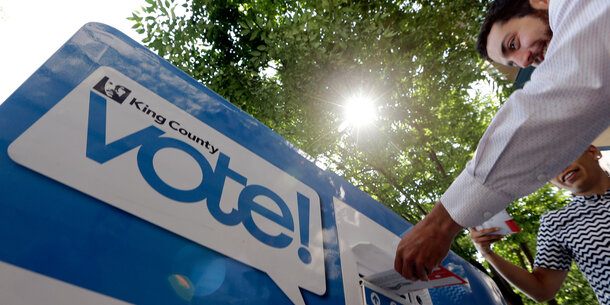Cross-posted from the Daily News.
Death by commission. That’s what cynics are saying about a new law passed in Albany as part of the budget, which mandates creation of a statewide system public financing of elections, but leaves most of the details of that reform in the hands of an appointed panel.
For now, death by commission is only a pessimistic prediction. We’re cynics about Albany, too, but the weeks before the budget vote showed that the press, New Yorkers and Washington policymakers are watching what happens with public financing. As long as that attention remains, our elected officials will find it difficult not to follow through.
The purpose of the new law is to incentivize candidates to seek small donations rather than chase big checks from lobbyists and special interests, and to encourage qualified candidates to compete regardless of their access to big donors. The nine-member commission has until December to develop a small-donor public financing program that will do this. Its recommendations will become law unless the Legislature makes changes within 20 days.
If we hold our leaders to their promises, we should have a robust small-donor match system before the year is out. This would make New York a national model of democracy that works for everyone, not just for a few wealthy special interests.
Under small-donor public financing, candidates who opt in agree to accept lower contribution limits, but the small donations they receive are matched with public dollars. Under proposals previously introduced by the governor and legislature, the match on small donations would be six to one, so that a New Yorker’s contribution of $10 is worth $70 to the candidate.
The public is exasperated after decades of decisions by Albany that seem only to benefit a few big donors. In November, we saw just how far the balance in Albany tilts toward a tiny group. The top 100 donors contributed significantly more money to state candidates than the estimated 137,000 small donors combined.
A poll in the few days before the budget vote showed that New Yorkers overwhelmingly favored having a small-donor matching system in the budget: upstate New York, 77%; Long Island, 81%; Hudson Valley, 80%; and New York City, 77%.
Nationally, the House last month passed its own version of small donor public financing as part of the larger For the People Act. Last week, 47 senators co-sponsored a Senate version.
“We believe that small donor matching is among the best means possible to tackle the dangerous, undue influence of big money in our politics,” wrote Reps. Jerry Nadler, Hakeem Jeffries, Carolyn Maloney and three other New York State representatives in a March 29 letter to the governor, the state Senate majority leader, and the state Assembly speaker. “New York State is in a unique position to show the rest of the country how this meaningful and necessary campaign finance reform can be accomplished and make a difference in our politics.”
We’ll know very soon if the cynics are right, or if the commission is what our leaders have promised. The first clue? How and when it’s staffed.
The law says that leaders in the legislative and executive branches appoint the members of the commission. Those selections should happen quickly (in the next few weeks) and thoughtfully. The commission won’t succeed if any members aren’t dedicated to the project.
Once convened, the commission should operate with transparency. Its meetings and hearings should be open to the public and convened throughout the state. Before making its final recommendations, the commission should release a draft report for public comment. By December, we should have a robust small-donor matching program.
Make no mistake, this reform challenges entrenched power, and there is every reason to believe that power will try to sabotage it. But small-donor public financing is the reform our elected officials promised. It’s now in the law. All eyes are on Albany.
(Image: Mike Groll/AP)




